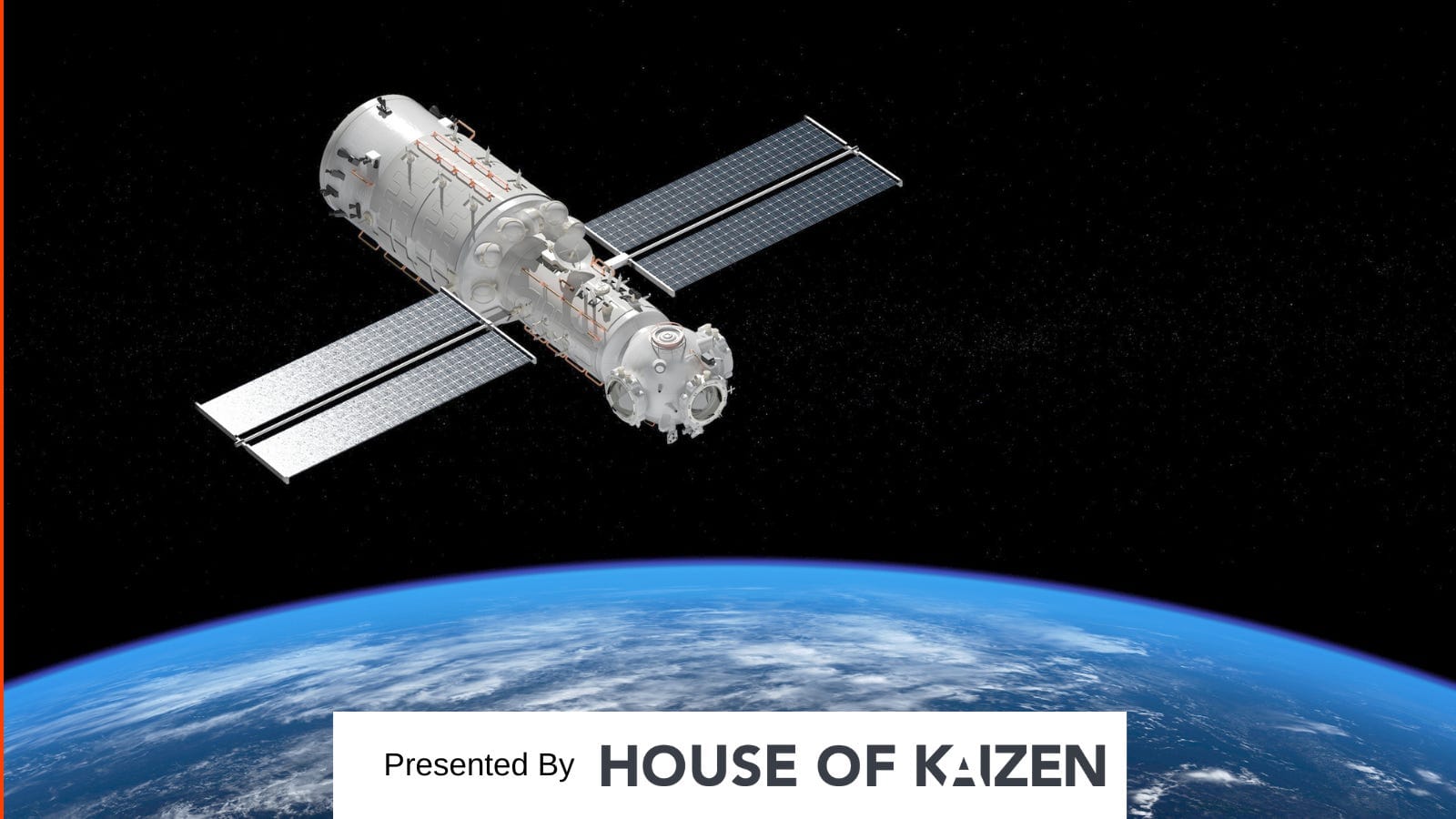Volatility and vulnerability
Economic downturns affect everyone, but some more than others

Not to be a downer, but most conversations I have these days quickly turn to preparations for a recession. But first, a message from House of Kaizen.

With a recession on the horizon, retention tactics are more important than ever. That puts a premium on high-frequency, low risk experimentation. House of Kaizen can help you identify the behaviors of the most valuable subscribers, define those behaviors in measurable metrics, hypothesize how to facilitate those behaviors, run clean experiments and promote better experiences. Sustainable, recession-proof subscriber revenue comes from a culture of continuous optimization and a framework for prioritizing those efforts.
Karl Wells, chief subscriptions officer at Dow Jones, will join House of Kaizen’s SubscriptionWorks community for an AMA on Tuesday, May 31, at 1pmEST about building a culture of optimization. WSJ’s growth over the past few years shows that he’s got a good thing going there and his perspectives are valuable.

What to expect when you’re expecting a downturn
I got some good-natured grief about the RIP good times edition, including what seemed like a subtweet, but I prefer to exist in the reality-based world vs a made-up one. The people I speak to are preparing for a pullback after an extraordinarily long bull market. For all the volatility of the digital publishing business during the past decade, more volatility is in store.
Any business during volatile periods looks first to its vulnerabilities. You can only control what you can control – that’s a cliche for a reason – but that doesn’t mean you put blinders on to the market. Downturns are not the end of the world, but they require hard looks at expansion plans that were, in many cases, based on the fake conditions of a frothy period during which governments injected trillions into the economy. That money cascaded through the economy, turning the Covid disruptions from a possible extinction event in spring of 2020 to a boomlet for most publishers.
We tend to give ourselves too much credit during good times. A market where companies are flush with cash and focused solely on growth is sorta like peering into the mirror without your contacts in: Wow, I am pretty good looking. Now publishers need to tend to their vulnerabilities. Here’s several that will need to be managed.
Brand advertising. This is my third recession in my working life. One feature I’ve noticed is that whenever the economy turns, you can count on trade publication articles exhorting companies not to cut their marketing budgets, armed with studies that show brands that continued to market and advertise during downturns ended up ahead. No CFO ever believes this; ignore these articles and LinkedIn posts. Advertising is always cut in recessions because it is a variable cost that can be quickly halted. People can cite Harvard Business Review studies all they want, companies will always pull back on marketing and advertising.
But not all marketing activity is the same. The most vulnerable is always brand advertising. That’s why Snap’s warning that “the macroeconomic environment has definitely deteriorated further and faster than we expected” spooked many publishing executives. Unlike many platforms, Snap attracts a lot of brand advertising spending to build awareness and consideration. Publishers dependent on brand advertising dollars that expected a year ahead of M&A and expansion are now thinking about how to halt spending themselves.
Branded content. The most vulnerable area of brand advertising for publishers resides in their content studios that create branded content. These outfits carry high fixed costs that can become an albatross in a downturn. Years ago, during the boom in content studios, a publishing executive lamented that a critical flaw is that publishers don’t have the muscle memory and culture of dialing up and down their staffing. If an ad agency loses an account, it is expected to shed people as a result. Publishing operates differently. On the client side, brand content deals are typically hard to tie directly to sales, so they’re ripe for the chopping block.
Bloated infrastructure. What seemed like a great plan in October now looks like a terrible idea. Look at Klarna, hardly an upstart as a 16-year-old company with 6,500 employees. A little less than a year ago, it closed a $639 million funding round at a $46 billion valuation. Now, it’s scrambling to raise funds at a lower valuation and is cutting 10% of staff, which it weirdly calls Klarnauts. “When we set our business plans for 2022 in the autumn of last year, it was a very different world than the one we are in today,” the CEO said.
On a far smaller scale, publishers will be caught in this trap, setting up infrastructure for boom times that becomes a hindrance in a downturn. The greatest lever to have in tough times is control on costs, and some publishers have painted themselves in a corner by misattributing growth generated by a unique macro environment. Tough times show who had discipline in managing their costs and their balance sheets. Taking on debt in a low-interest rate environment is a no-brainer, but rates will likely continue to rise.
Tech dependency. Many publishers have fed at the trough of tech during its long boom. Tech has been one clear “winner” of the pandemic era, seeing its stock prices rise to stratospheric levels. Publishers that rely on tech and other hard-hit categories have vulnerabilities. Take the explosion of fintech and crypto-focused publications that have benefited from a gusher of spending from well-financed companies in land grab mode. On a far smaller scale, I saw the dynamics of this in the early years at Digiday, when ad tech was beginning its boom, with venture capital flowing into the sector. There’s a reason why stories announcing big VC rounds tend to say a portion would be devoted to “sales and marketing.” Tech stocks have continued to spiral, and spending pullbacks are inevitable. The same is true in fintech and crypto as the absurd valuations assigned these companies now seem like they’re from a different world. The creator economy built around crypto and fintech will likely feel extreme pain.
Boondoggles. Events have rebounded quite nicely for most, although it can be uneven. A downturn inevitably leads to cost cutting in areas like travel and purchasing tickets. By the same token, big headline sponsorships are an easy call to cut. Not all events are equal, of course, and those that are basically excuses to go somewhere nice, have some drinks and nice meals will be in for trouble. The events that are more tied to business deals by acting as sales generators will be less vulnerable.
That said, I don’t think recessions are necessarily a bad thing overall. The best companies use them to lay the groundwork to come out stronger and take disproportionate market share. I was once told “the league tables shift” during downturns. Much of the hype fades. The work publishers have done to diversify their business models will aid them. Commerce revenue will likely decline along with ad dollars, but subscriptions are a more consistent form of revenue. Churn will increase for many – if Netflix is feeling pressure, publishers will – but having revenue baked in is an invaluable asset in volatile times.
Finally, I think the downturn will be good on balance for new publishers with lean models. Having a lean model means your fixed costs are already lower without the bloat that’s inevitable at incumbents. The flip side is uncertainty tends to lead to a flight to safety, and marketers will be loath to try new solutions instead of sticking with the tried-and-true.


When building a streaming app, the number of factors to consider can seem endless. For years, Applicaster’s head of product has helped top publishers meet these challenges, leading him to create the ultimate guide to building, managing, delivering, and monetizing an OTT app.
Download “2022 OTT App Building Guide: The 10 Factors You Can’t Miss” for checklists and recommendations to bring your app to life and manage it after launch. Applicaster’s team of experts is here to help you spend time growing your content business, not building an app.

Recommendations
Publishers love to talk about trust, but they’re also fond of treating their audience like adversaries. Take the tactic of selling subscriptions in four-week increments rather than list the monthly cost. Squeezing out an extra “monthly” payment – normal people convert four weeks to one month – is great for the bottom line, terrible for developing trust.
The jury’s out on whether lean media models can make a dent in the local news problem.Simon Owens has a Q&A with Tony Mecia, founder of the Charlotte Ledger, a newsletter devoted to local news in the area. Since its founding in 2019, the Ledger has clawed its way to $226,000 in revenue, enough to add a second employee.
Making a good product is hard enough, but making a good ad product is a true feat. It’s hard enough to make something that appeals to one group of people, but ad products have it harder. They need to provide value to the audience while also performing for the advertiser. A quick spin around the internet will show how hard this balance is to strike. I found it interesting, if aspirational, that in ranking the considerations for ad products, Troy Young put consumer experience ahead of yield. That’s only possible if you have an audience-first publishing model.
Selling ads is a new area for me. I’ve learned a lot, but still have lots more to figure out. Louis Nicholls’ Send & Grow podcast has a great episode with MadRev’s Katy Huff with the outlook for newsletter ads. One key takeaway: Focus on producing measurable results.

Thanks for reading. On the subject of ads, even though Katy said a media kit isn’t needed, check out the one for The Rebooting’s sponsorships. Send me feedback: bmorrissey@gmail.com.




